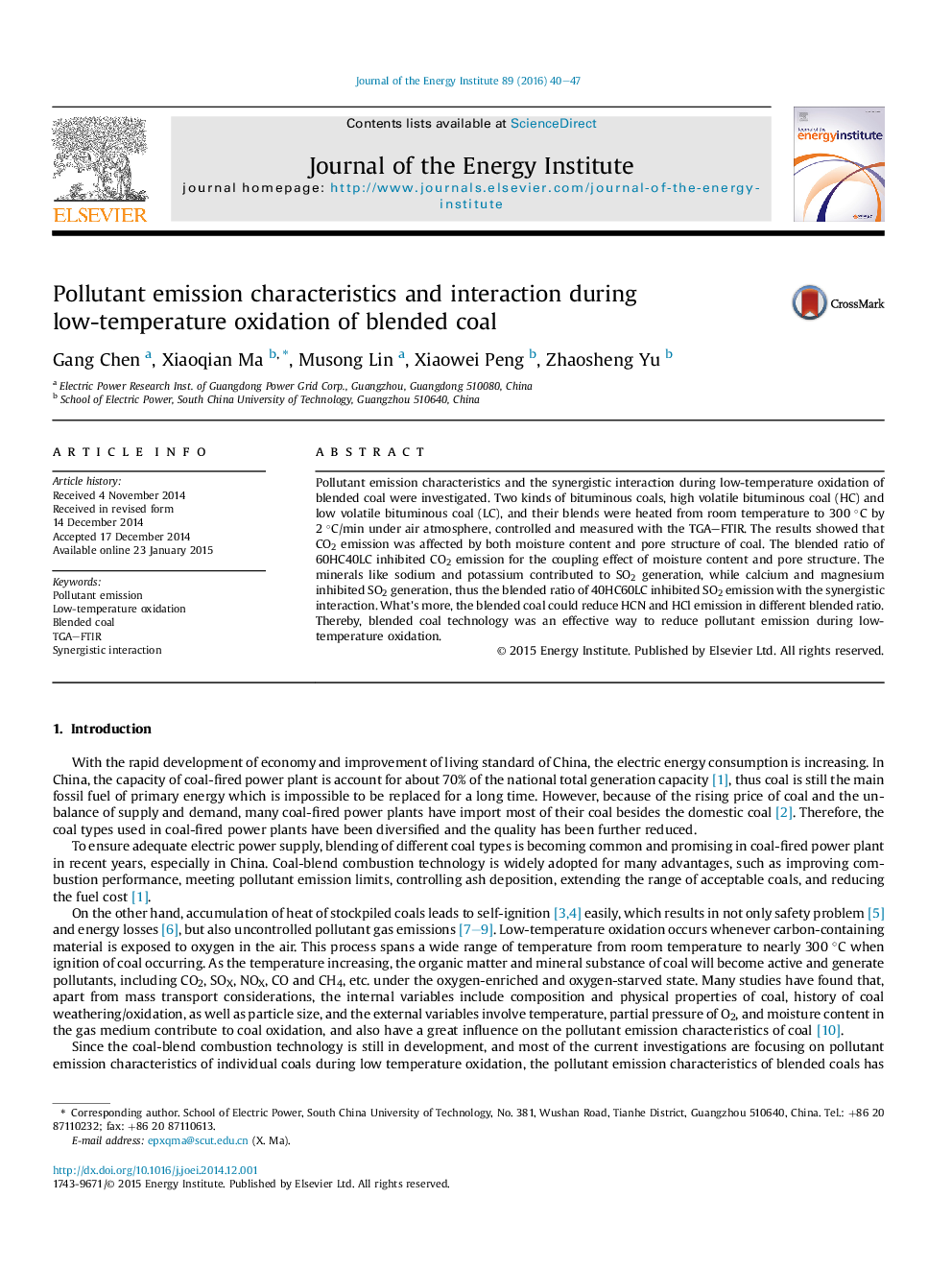| Article ID | Journal | Published Year | Pages | File Type |
|---|---|---|---|---|
| 1747594 | Journal of the Energy Institute | 2016 | 8 Pages |
•Pollutant emission during low-temperature oxidation of blended coal was investigated.•Moisture content and chemical composition of coal affected pollutant emission.•Synergistic interaction of blended coal affected pollutant emission.•Blended coal technology was an effective way to reduced pollutant emission.
Pollutant emission characteristics and the synergistic interaction during low-temperature oxidation of blended coal were investigated. Two kinds of bituminous coals, high volatile bituminous coal (HC) and low volatile bituminous coal (LC), and their blends were heated from room temperature to 300 °C by 2 °C/min under air atmosphere, controlled and measured with the TGA–FTIR. The results showed that CO2 emission was affected by both moisture content and pore structure of coal. The blended ratio of 60HC40LC inhibited CO2 emission for the coupling effect of moisture content and pore structure. The minerals like sodium and potassium contributed to SO2 generation, while calcium and magnesium inhibited SO2 generation, thus the blended ratio of 40HC60LC inhibited SO2 emission with the synergistic interaction. What's more, the blended coal could reduce HCN and HCl emission in different blended ratio. Thereby, blended coal technology was an effective way to reduce pollutant emission during low-temperature oxidation.
